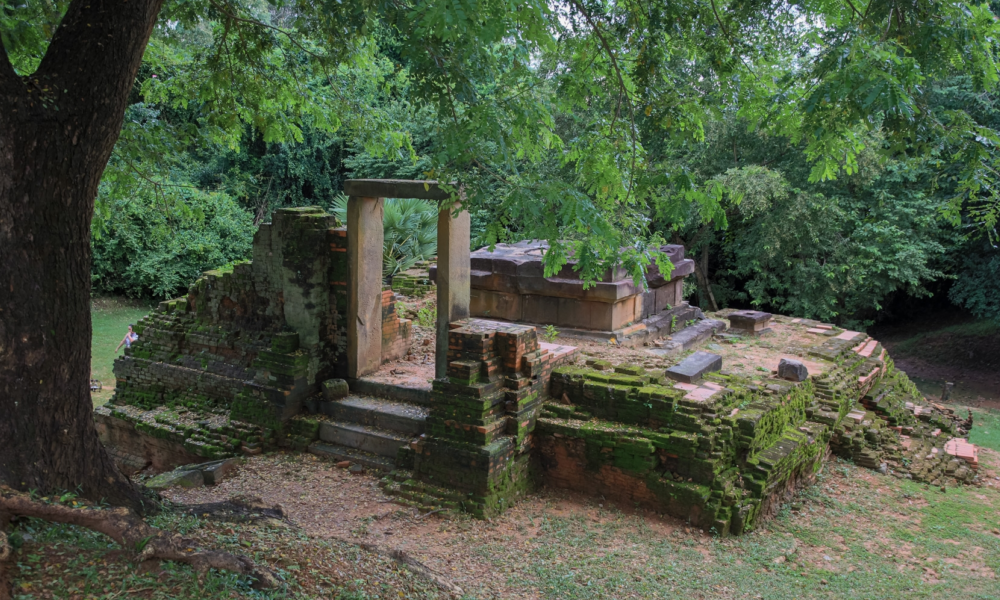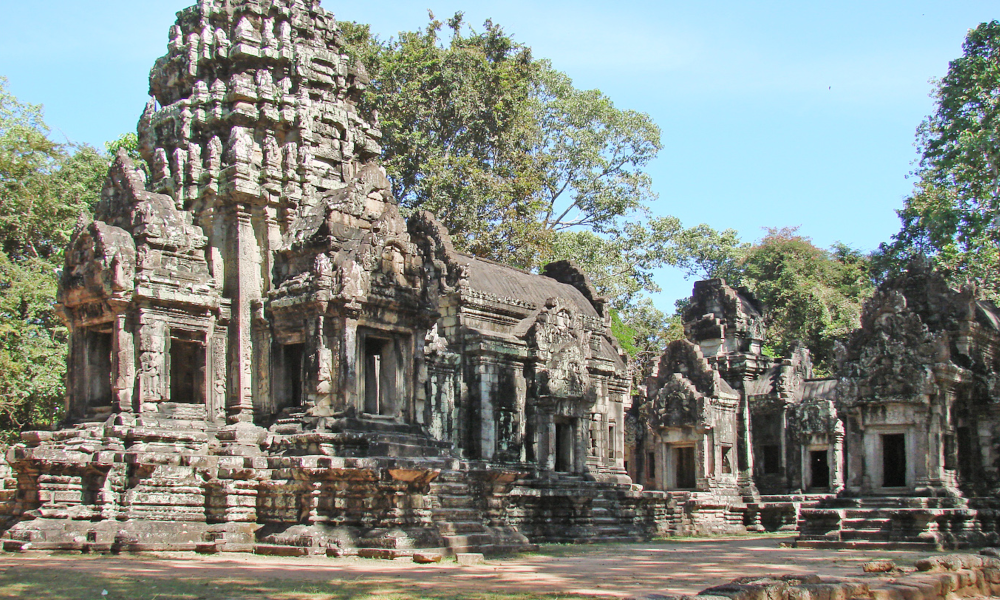Ak Yum Temple - The First Khmer Temple

Ak Yum temple holds significant historical value as it represents one of the earliest known instances of Khmer architecture and is believed to be the first constructed in the “Temple Mountain” style.
Table of Contents
ToggleCurrently, Ak Yum is in a state of disrepair and seldom attracts tourists due to the limited remnants available for viewing.
Visitors frequently include West Baray in their itinerary, as Ak Yum is situated along its shoreline. Guests can explore the temple ruins, unwind in a hammock, enjoy some barbecue, and take a swim.
This location is highly favored by both local and international tourists.
The Angkor Wat Small Circuit Tour stands out as the most favored excursion for those visiting Angkor Wat. This tour provides the opportunity to witness...
Layout and Design
For dedicated enthusiasts, Prasat Ak Yum is an essential temple to visit, as it represents the inaugural construction in the “Temple Mountain” architectural style.
Numerous Khmer temples, including Bakheng, Baphuon, and Angkor Wat, have embraced a similar design. Numerous stones inscribed with texts from the 7th to the 11th centuries have been discovered, with one inscription indicating that Ak Yum was consecrated to Gambhiresvara, known as the “God of the Depths.”
The temple features a single-chamber sanctuary constructed from brick, which scholars believe dates back to the 8th century. In the 9th century, it is thought that King Jayavarman II expanded the site into a larger tiered pyramid structure with a base measuring approximately 100 meters square.
Currently, little remains of the original structure, with only a few small fragments of the temple still visible. Additionally, several bronze statues have been unearthed at the site, representing both Hindu and Buddhist deities.
History of Ak Yum
The identity of the builder of the Ak Yum temple remains uncertain; however, one inscription indicates the year 674 AD, which is associated with King Jayavarman I. It is believed that the temple’s construction was further developed in the 9th century under the reign of King Jayavarman II.
In the 11th century, the West Baray reservoir was constructed, leading to the partial submersion of the Ak Yum temple due to a dike on its southern side. In 1932, the site was excavated by French archaeologist George Trouvé. Since that time, Ak Yum has been left in a state of disrepair and is infrequently visited.
Should Visit or Not
While Ak Yum may not offer a plethora of attractions, it remains a site worth visiting due to its historical importance as the first temple constructed during the Angkor Empire. Presently, it exists primarily in a state of ruin, providing limited visual appeal.
Situated adjacent to West Baray, it is unlikely that one would specifically travel to see Ak Yum; however, it serves as a convenient stop when exploring the baray.
Notably, it is the sole temple that does not necessitate an Angkor Pass for entry.
Location & How to Get Ak Yum
Ak Yum is situated on the southwestern side of West Baray. To reach it, proceed along National Road 6 towards Battambang for approximately 7 kilometers.
Make a right turn onto the road leading to West Baray, then take a left just before arriving at the reservoir. Continue along this road for about 1 kilometer.
A small sign indicates the direction, making it easy to miss the site. If you find yourself at a parking area adjacent to huts where visitors gather by the waterfront, you have gone too far.
Given that Ak Yum is located roughly 11 kilometers from Siem Reap, various transportation options are available. Tuk-tuks can easily access the temple, and cycling is also a viable option. Taxis and minivans have good access, although buses may encounter difficulties.
It is important to note that the temple is relatively obscure and infrequently visited, so many local drivers may be unfamiliar with its location.

